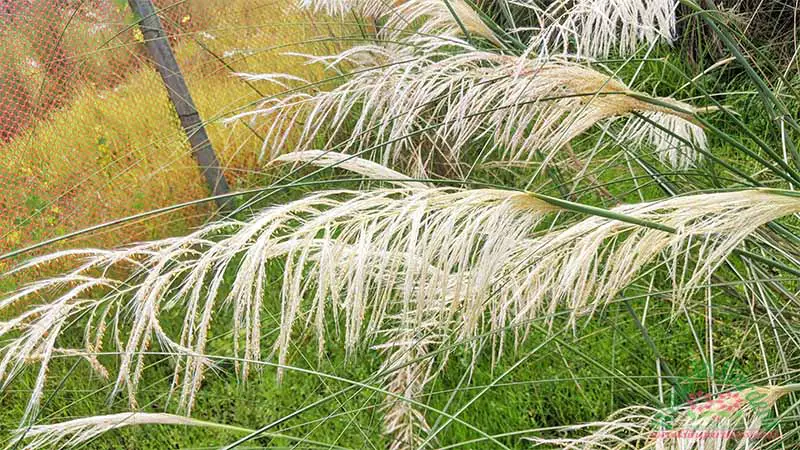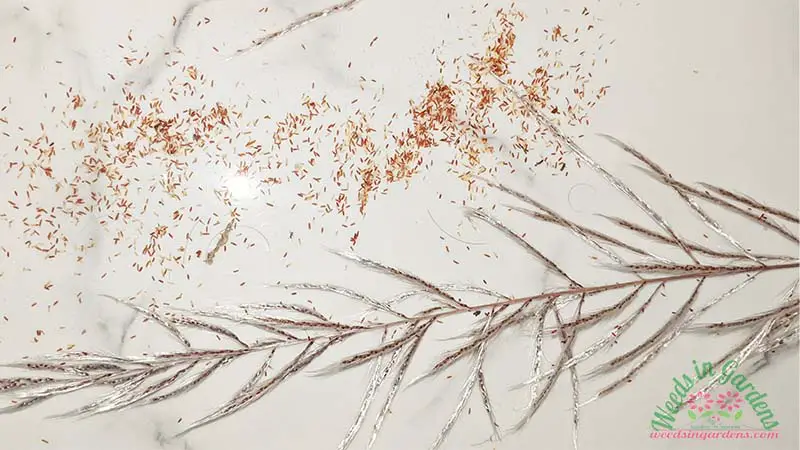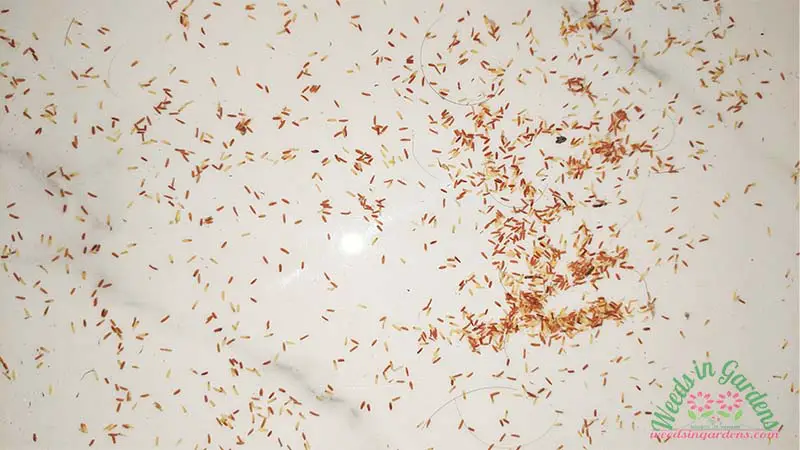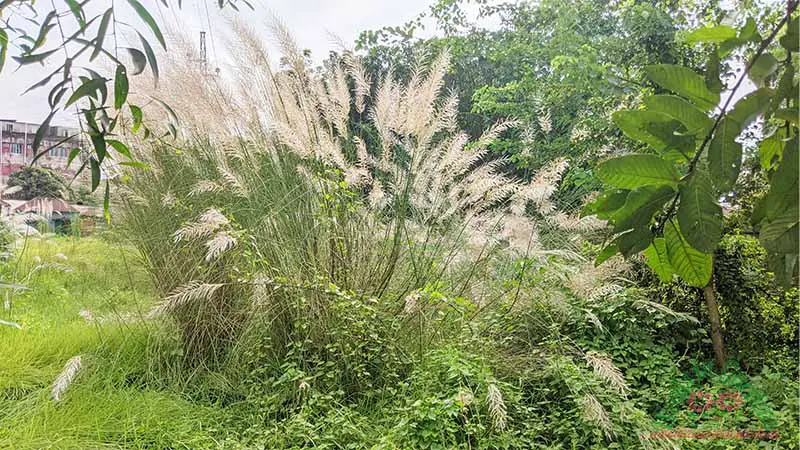Saccharum spontaneum, also known as wild sugarcane, is a tall perennial grass species that is native to South Asia but is now found throughout the world. In Bengali this plant is known as “kashful” (কাশফুল). This plant has many useful properties that make it very important in agriculture and industry. This is a very useful and valuable plant that can be used in many different industries and traditional ways of healing. This plant has a long history of use and has been cultivated for centuries in different regions of the world. In the past few years, Saccharum spontaneum has gotten more attention because it has the potential to be a sustainable crop and is good for the environment. By the end of this article, you will know everything there is to know about this amazing plant and what it can do for agriculture, industry, and the environment. We will explore this noteworthy plant’s botanical description, cultivation, uses, and environmental significance. So let’s get started!

Geographical distribution and natural habitats
Saccharum spontaneum, also known as wild sugarcane or simply Saccharum, is a species of tall perennial grass in the Poaceae family. It is native to South Asia’s tropical and subtropical regions, including India, Pakistan, Sri Lanka, and Bangladesh. However, it has also been introduced to many other parts of the world, including Africa, the Americas, and Australia.
Evolutionary history and relation to other Saccharum species
The evolutionary history of Saccharum spontaneum is not well understood, but it is believed to be closely related to other Saccharum species, including the cultivated sugarcane (Saccharum officinarum) and the wild sugarcane (Saccharum robustum). These three species are thought to have a common ancestor that existed in Southeast Asia several million years ago.
Historical uses of the plant in different cultures and regions
The historical use of Saccharum spontaneum varies across different cultures and regions. In South Asia, it has been used for centuries as a source of fiber, fuel, and fodder for livestock. In India, the plant is known as kasa and is used in Ayurvedic medicine for its antipyretic and diuretic properties. In addition, the plant is believed to have spiritual significance in some Hindu traditions.
In more recent times, the potential of Saccharum spontaneum for commercial sugar production has been recognized, particularly in countries where it is considered an invasive weed. The plant’s hardiness, disease resistance, and high sugar content make it an attractive alternative to conventional sugarcane in some areas.
Is Saccharum spontaneum invasive?
Saccharum spontaneum, or wild sugarcane, is considered an invasive species in some regions where it has been introduced, particularly in Australia and the United States. Its ability to spread rapidly and compete with native plant species can have negative impacts on biodiversity and ecosystem functioning. However, in its native range, such as in South Asia, it is an important plant for the local ecosystems and has been used for various purposes for centuries.
Botanical Description of Saccharum spontaneum
Morphology and growth habit
Saccharum spontaneum is a tall, robust grass species that can grow up to 5 meters in height, although it typically grows to a height of 2-3 meters. It has a thick, fibrous stem that is segmented into nodes and internodes. The leaves are long and narrow, with a bluish-green hue, and are arranged in a clumping pattern around the stem. The plant has an extensive root system, which can grow up to several meters deep and wide.
Chemical composition and nutritional value
The chemical composition of Saccharum spontaneum varies depending on the growth stage and environmental conditions. The plant contains high levels of cellulose, hemicellulose, and lignin, making it a valuable source of fiber for paper and pulp production. It also contains significant amounts of sucrose, glucose, and fructose, making it a potential sugar source and biofuels.
Reproductive cycle and propagation methods
The reproductive cycle of Saccharum spontaneum is similar to that of other grass species. The plant produces inflorescences, or flower clusters, that contain both male and female reproductive organs. The flowers are wind-pollinated and produce small, ovate seeds that are dispersed by wind or animals.

Saccharum spontaneum can be propagated through both sexual and asexual means. Sexual propagation involves planting seeds, while asexual propagation involves using stem cuttings or tissue culture to produce new plants. In agricultural settings, stem cuttings are the most common method of propagation, as they allow for the propagation of identical clones of the parent plant.
Saccharum spontaneum seeds
Saccharum spontaneum plants produce seeds that can be used for propagation. The seeds are small, black, and covered with fine hairs. They are typically harvested from mature plants at the end of the growing season when the seed heads have dried and turned brown. To collect the seeds, the seed heads can be cut and threshed to release the seeds. The seeds can then be cleaned and stored in a cool, dry place until they are ready to be planted.

It is important to note that Saccharum spontaneum is considered an invasive species in some regions, so it is essential to exercise caution when collecting and planting its seeds. Before planting, it is essential to research whether the species is allowed to be grown in your region and to take steps to prevent the plant from spreading and becoming a problem.
Cultivation and Harvesting of Saccharum spontaneum
Soil and climate requirements
Saccharum spontaneum can be grown in a wide range of environmental conditions, including tropical and subtropical climates, and is well adapted to poor soils and waterlogging. The plant can tolerate a wide range of temperatures, from below freezing to over 40°C, although optimal growth occurs at temperatures between 20 and 30°C.
Propagation methods and planting techniques
Propagation of Saccharum spontaneum is typically done through stem cuttings, which can be planted directly in the field. The cuttings should be taken from mature, healthy plants and planted in well-drained soil. The plants should be watered regularly until they become established, at which point they can tolerate periodic droughts. Once established, the plants can grow rapidly and may require regular pruning to prevent them from becoming too tall and unmanageable.
Pest and Diseases
It is also relatively resistant to pests and diseases, making it an attractive crop for cultivation in areas where other crops may be prone to damage from pests or diseases.
Harvesting methods and post-harvest processing
Harvesting of Saccharum spontaneum can be done manually or mechanically, depending on the scale of production. In small-scale production, the plants are typically harvested by hand using sickles or machetes. In larger-scale production, mechanical harvesters can be used to cut and collect the plants. After harvest, the plants are typically transported to processing facilities, where they are crushed and processed to extract the sugar or fiber.

The timing of harvesting of Saccharum spontaneum is important for achieving optimal yield and quality of the crop. The plants should be harvested when they reach maturity, which is typically around 12-18 months after planting. At this stage, the plants will have accumulated the highest levels of sucrose, making them ideal for sugar production. However, delaying the harvest beyond this point can result in a decline in sucrose content and an increase in fiber content, which can reduce the overall quality of the crop.
Nutritional value
In terms of nutritional value, Saccharum spontaneum is a rich source of energy, fiber, and minerals such as potassium and calcium. The plant’s leaves and stem can be used as a source of fodder for livestock, and birds and other wildlife can eat the seeds.
Uses of Saccharum spontaneum in Industry
Sugar Production
Saccharum spontaneum is a rich source of sucrose, which can be extracted and processed to produce sugar. The sugar content of Saccharum spontaneum can vary depending on the plant’s environmental conditions and growth stage. However, studies have shown that Saccharum spontaneum can contain up to 17% sucrose, making it a valuable source of sugar for the food and beverage industry. The process of sugar production involves crushing and pressing the plant material to extract the juice, which is then subjected to a series of purification steps to remove impurities and produce refined sugar.
Biofuels
Saccharum spontaneum is also a potential source of biofuels, owing to its high cellulose and hemicellulose content. The plant can be used to produce bioethanol, which is a renewable fuel that can be blended with gasoline to reduce emissions and dependence on fossil fuels. The process of bioethanol production involves breaking down the cellulose and hemicellulose in the plant material using enzymes, and fermenting the resulting sugars to produce ethanol.
Pulp and Paper
Saccharum spontaneum is a valuable source of fiber for the pulp and paper industry. The plant contains significant amounts of lignin, cellulose, and hemicellulose, which can be extracted and processed to produce paper and other fiber-based products. The process of pulp and paper production involves pulping the plant material to break down the fibers, and then subjecting the resulting pulp to a series of cleaning and bleaching steps to produce high-quality paper.
Fodder for Livestock
The leaves and stems of Saccharum spontaneum can be used as a source of fodder for livestock, owing to their high nutritional value. The plant contains significant amounts of protein, energy, and minerals, which can help to meet the nutritional requirements of livestock such as cattle and sheep. In addition, the plant is relatively easy to cultivate and harvest, making it an attractive option for small-scale farmers.
Medicinal and Therapeutic Properties of Saccharum spontaneum
In addition to its industrial uses, Saccharum spontaneum also has a long history of use in traditional medicine, particularly in Ayurveda and Unani systems of medicine. The plant contains various bioactive compounds that have been found to have medicinal and therapeutic properties, including anti-inflammatory, anti-microbial, anti-cancer, and anti-diabetic effects. Some of the most significant medicinal and therapeutic properties of Saccharum spontaneum are discussed below.
Anti-inflammatory Properties
Saccharum spontaneum has been found to possess significant anti-inflammatory properties, owing to the presence of various bioactive compounds such as flavonoids, alkaloids, and terpenoids. These compounds have been found to inhibit the activity of inflammatory enzymes and cytokines, which are responsible for the production of inflammation in the body. As a result, the plant has been used in traditional medicine for the treatment of inflammatory conditions such as rheumatoid arthritis and asthma.
Anti-microbial Properties
Saccharum spontaneum has also been found to have significant anti-microbial properties, owing to the presence of various phytochemicals such as alkaloids and flavonoids. These compounds have been found to inhibit the growth and activity of various microorganisms, including bacteria, viruses, and fungi. As a result, the plant has been used in traditional medicine for the treatment of various infectious diseases such as bacterial and viral infections.
Anti-cancer Properties
Saccharum spontaneum has been found to possess significant anti-cancer properties, owing to the presence of various bioactive compounds such as phenolics, flavonoids, and alkaloids. These compounds have been found to inhibit the growth and activity of cancer cells, and induce apoptosis (programmed cell death) in cancer cells. As a result, the plant has been investigated for its potential use in the treatment of various types of cancer, including breast cancer, liver cancer, and colon cancer.
Anti-diabetic Properties
Saccharum spontaneum has also been found to have significant anti-diabetic properties, owing to the presence of various bioactive compounds such as flavonoids and alkaloids. These compounds have been found to enhance insulin secretion and reduce insulin resistance, which are key factors in the development of type 2 diabetes. As a result, the plant has been used in traditional medicine for the treatment of diabetes.
Wound Healing Properties
Saccharum spontaneum has been found to possess significant wound healing properties, owing to the presence of various bioactive compounds such as phenolics and alkaloids. These compounds have been found to promote the proliferation of skin cells, and enhance the formation of granulation tissue, which is important in the process of wound healing. As a result, the plant has been used in traditional medicine to treat various types of wounds, including burns and cuts.
Is Saccharum spontaneum toxic?
There is limited research available on the toxicity of Saccharum spontaneum, and the available studies have focused on its potential as a phytoremediation plant for heavy metals and pollutants. However, as with any plant, it is possible that certain parts of Saccharum spontaneum, such as the leaves or roots, may contain toxic compounds or have adverse effects on some individuals. It is always recommended to exercise caution and seek expert advice before using any plant for medicinal or other purposes.
Environmental and Ecological Significance of Saccharum spontaneum
Saccharum spontaneum has several environmental and ecological benefits that make it an important plant for the sustainable development of the regions where it grows. The plant can help conserve soil, water, and biodiversity, mitigate climate change, and clean up contaminated sites.
Soil Conservation
Saccharum spontaneum is also used for land reclamation, owing to its ability to grow in poor soils and tolerate waterlogging. The plant has a deep, extensive root system that can help to stabilize soil and prevent erosion, making it useful for restoring degraded land. In addition, the plant can help improve soil fertility and structure by adding organic matter.
Water Conservation
Saccharum spontaneum is a highly efficient water user, meaning that it can grow in areas with limited water resources. The plant has a low water requirement and can thrive in areas with low rainfall or limited irrigation. This makes it a valuable plant for areas with water scarcity.
Biodiversity Conservation
Saccharum spontaneum is an important habitat for many plant and animal species, including birds and insects. The plant provides food and shelter for many species, and its deep root system helps to improve soil quality, which can benefit other plant species.
Carbon Sequestration
Saccharum spontaneum has the ability to sequester carbon from the atmosphere through photosynthesis, making it an important plant for carbon sequestration and climate change mitigation.
Phytoremediation
Saccharum spontaneum has been found to have the ability to absorb and accumulate heavy metals and other contaminants from the soil. This makes it a valuable plant for phytoremediation, a process that uses plants to clean up contaminated sites.
Challenges and Future Directions for Saccharum spontaneum Research and Development
Although Saccharum spontaneum has several potential uses and benefits, several challenges must be addressed to realize its potential fully. Some of the challenges and future directions for Saccharum spontaneum research and development are discussed below.
Genetic Improvement
One of the major challenges in the development of Saccharum spontaneum is the need for genetic improvement to increase its biomass yield, sugar content, and disease resistance. More research is needed to identify and develop Saccharum spontaneum varieties that are more suitable for commercial use.
Harvesting and Processing
Another challenge for the development of Saccharum spontaneum is the need for efficient harvesting and processing methods. Harvesting and processing Saccharum spontaneum can be difficult and labor-intensive, which makes it less economically viable. Research is needed to develop more efficient and cost-effective harvesting and processing methods.
Market Demand
The development of Saccharum spontaneum as a commercial crop is also hindered by the lack of market demand for its products. More research is needed to identify potential markets for Saccharum spontaneum products, such as biofuels, bioplastics, and medicinal products.
Environmental Impact
The cultivation of Saccharum spontaneum can have both positive and negative environmental impacts. While the plant has several environmental benefits, such as soil conservation and carbon sequestration, its cultivation can also have negative impacts, such as competition with native species and the use of water resources. Research is needed to identify and mitigate the negative environmental impacts of Saccharum spontaneum cultivation.
Policy and Funding
Finally, the development of Saccharum spontaneum is hindered by a lack of policy and funding support. More research funding and policy support are needed to advance research and development of Saccharum spontaneum.
How to control Saccharum spontaneum
Controlling Saccharum spontaneum, or wild sugarcane, can be challenging due to its ability to spread rapidly and establish dense populations. Several methods can be used to control the plant, including:
- Physical removal: Small infestations of Saccharum spontaneum can be controlled by manually removing the plants, including the roots. This method is best used in areas where the plant has not yet established a dense population.
- Herbicides: Herbicides can be used to control larger infestations of Saccharum spontaneum. Glyphosate is a commonly used herbicide, but other herbicides may also be effective. It is important to follow the manufacturer’s instructions carefully and responsibly use the herbicide.
- Grazing: Livestock grazing can help to control Saccharum spontaneum by preventing the plant from establishing dense populations. However, this method may not be effective in all situations, and care must be taken to ensure that the livestock do not cause damage to the surrounding vegetation.
- Biological control: Biological control methods, such as the introduction of natural enemies, may be effective in controlling Saccharum spontaneum. However, these methods must be carefully researched and evaluated to prevent unintended consequences, such as the introduction of new invasive species.
It is important to note that controlling Saccharum spontaneum can be challenging, and it may not be possible to eradicate the plant in all situations completely. It is essential to work with local experts and follow best practices to ensure that control efforts are effective and do not have unintended consequences.
Conclusion
In conclusion, Saccharum spontaneum is a valuable and versatile plant with various uses in various industries and traditional medicinal practices. This plant has several ecological and environmental benefits and has the potential to become a valuable crop for sustainable development in regions where it grows. However, several challenges must be addressed to realize its potential fully.
More research is needed to develop Saccharum spontaneum varieties that are more suitable for commercial use and identify and develop more efficient and cost-effective harvesting and processing methods. Additionally, more research is needed to identify potential markets for Saccharum spontaneum products and mitigate its cultivation’s negative environmental impacts. Finally, more policy and funding support is needed to advance the research and development of Saccharum spontaneum.
